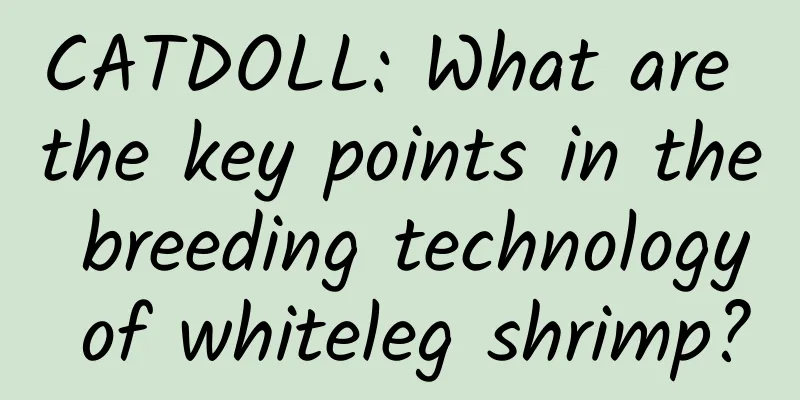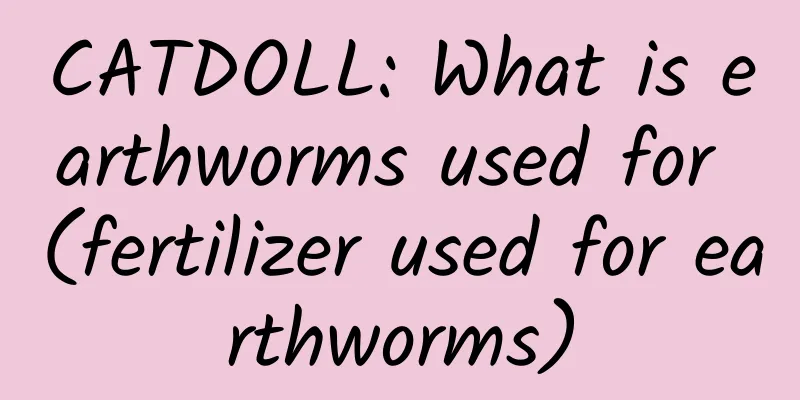CATDOLL : CATDOLL: What are the key points in the breeding technology of whiteleg shrimp?

|
01. Control of pond water color The most ideal water color for breeding white shrimp is light green or green created by algae or diatom mud. The key method is to apply nutrients every 5-7 days and match algae species, that is, biological water paste + EM bacteria + Chlorella (or oocysts, etc.). In the second half of breeding, due to the increase of residual bait and shrimp feces, the water color gradually becomes darker. At this time, the fish tank should be properly changed and filled, and microecological preparations should be used regularly to adjust the water body and water color concentration. It is recommended to use spore bacteria + photosynthetic bacteria (or EM bacteria) every 5-7 days. The two are combined and can be used alternately. 02. Maintain the ecological balance of shrimp ponds and cultivate good bacteria and algae. Regularly improve the bottom to remove toxins, cultivate bacteria and algae, maintain the water color, rich, lively, tender and refreshing, maintain a good ecosystem and food web in the water, ensure the normal conversion of water substances and forces, and maintain water stability. 03. Control the various parameters of pool water during the cultivation process. Pay attention to controlling the permanganate index, sodium nitrite, pH value, dissolved oxygen, total hardness, total alkalinity, permanganate index, minerals, clarity and other indicators. Scientifically use various water conditioners, such as bottom modification, microbial agents, detoxification and anti-stress, etc. Our company has relevant product packages for adjustment and processing of each of the above indicators, which are not elaborated here. 04. Feeding management method The feeding amount should be comprehensively determined based on the size of the shrimp, survival rate, water body, environment, quality of concentrated feed, etc. Feed several times a day, with 60% to 70% of the feeding amount at night. Feed probiotic powder and liver protection products regularly to improve immunity. 05. Daily management method: Patrol the pond three times a day, pay attention to the water color and the activity, growth and feeding status of the white shrimp, and patrol once from morning to night to adjust the amount of feed and properly deal with various situations. 06. Solution to white stool symptoms Solution White stool disease is usually manifested by shrimps eating normally in the early stage, then eating slowly or even not eating, and then excreting long, thin, white, sticky excrement, adhering to the feeding table or floating on the surface of the water, and accumulating a large amount of foul smell. After autopsy, the top layer of the intestinal mucosa falls off and the lower layer of the mucosa grows and swells. In severe cases, the jejunum and liver show atrophy, swelling or atrophy. The main components of "white stool" are diseased tissues excreted by the liver, the fallen mucosa of the intestinal tract, and a small amount of normal excrement components. Causes of white stool disease 1. Temperature, long-term continuous rain or high temperature weather, the water environment is prone to various problems. 2. For seedlings, it is recommended to use shrimp seedlings with stable quality and reliability. 3. The water body, bottom quality and biological elements of the aquaculture water body: (1) Bacterial infection Harmful pathogens such as Vibrio parahaemolyticus, Vibrio harveyi and Vibrio vulnificus adhere to some silt, leftover bait and dead algae at the bottom of the pond, which can easily lead to gastrointestinal infection, hepatopancreatic atrophy, reduced shrimp food intake or even no food intake, decreased vitality and gradual occurrence of white stools. (2) Harmful algae outbreaks In the second half of the breeding period, under high temperature conditions, harmful algae such as euglena and blue algae are prone to bloom, and after the algae fall, a large amount of algal toxins are produced. Shrimp eat these harmful algae and become poisoned, causing liver distension, gastrointestinal diseases, and easy to produce white stools. (3) Deterioration of the substrate The accumulation of residual bait, excrement and dead algae in the bottom environment causes the water to smell bad, the biological oxygen consumption and chemical oxygen consumption to increase, and a large number of toxic bacteria grow. The bottom quality determines whether the shrimp will get sick. The permanganate index, sodium nitrite and other indicators in the bottom cannot be ignored. Under the long-term threat of these harmful substances, it is easy to cause shrimp liver swelling and gastrointestinal diseases, and white stool. 4. Mycotoxins Due to inferior raw materials and improper storage methods, mycotoxins in concentrated feed often exceed the standard. Long-term consumption of moldy concentrated feed leads to liver cell apoptosis, hepatopancreatic detoxification and absorption problems. These adverse reactions, in turn, cause shrimp growth retardation and reduced feed effectiveness. Mycotoxins suppress shrimp immunity and are prone to cause large-scale symptoms, including white stools. Prevention and treatment of shrimp leucosis (1) Pay attention to your eating habits Pay close attention to the condition of the feed table and carefully observe the eating conditions of the shrimps. If the eating rate decreases or even stops, it is necessary to check and solve various reasons. (2) Maintaining the gastrointestinal, hepatopancreatic environment During the planting stage, high-quality lactic acid bacteria beverages (such as EM concentrate, probiotic mixing king, etc., self-expanding culture agents are not recommended) are mixed in the feed factory for feeding to carry out digestive tract health care; at the same time, Chinese herbal medicines for clearing heat and reducing fire (such as Gan Lebao, Ding Changshu, Zheng Changsheng) can be taken regularly to maintain the health of the hepatopancreas. (3) Water disinfection and sterilization Generally, chlorine dioxide or compound iodine preparations are used and should be used at least once a month to prevent the growth of harmful bacteria and pathogens on the irrigation belt. 5. Solve the bottom soil Potassium persulfate is known as the fifth generation disinfectant. It is green and safe, has little irritation to farmed animals, and leaves no residue after use. It is generally used in a 20% dosage, such as Bottom Change King, and combined with biological bottom change (biological bottom cleaner). It is used every 10-15 days to effectively remove bottom heat, improve the bottom environment, and increase the bottom redox potential. 6. Concentrated feed management methods Pay attention to the storage of concentrated feed, keep it in a cool and ventilated place, avoid exposure to sunlight and moisture, and do not use fake or moldy concentrated feed. 07. Prevention of Vibrio disease Vibrio is a conditional pathogen. When the water environment is poor, the bottom soil is deteriorating, and the shrimp body is damaged by mechanical equipment, a lot of Vibrio disease will occur when the shrimp immunity is reduced. It is highly contagious and the incidence rate can reach 100%. The mortality rate in shrimp ponds with severe outbreaks can reach more than 90%. The clinical manifestations of Vibrio disease in shrimp are: red legs, black and yellow gills, broken whiskers, ulcers on the forehead and tail, and slow external thinking. The "stealth death disease" of shrimp caused in recent years is caused by Vibrio parahaemolyticus of the genus Vibrio. The characteristics of Vibrio disease caused by it are: shrimp eat a small amount or no food, the stomach and intestines are empty, the liver and pancreas are significantly atrophied, the shrimp body is not red (becoming more transparent), the diseased shrimp rarely swim on the surface of the river, often lie on the edge of the pond, have poor vitality, dig sand and mud in the earth pond, and death usually occurs in the pond. Prevention and control measures: 1. Completely clean the pond and disinfect and sterilize The first is to regulate the sludge in the pond, use quicklime powder to improve the bottom quality, and repair the leaks in the waterproof layer (to prevent the virus from spreading in series), so as to create a better "living" environment for the healthy and happy growth of shrimps; the second is to use disinfectants and sterilization drugs to eliminate harmful organisms in the pond. 2. Create excellent water environment management Every seepage must be filtered and sterilized. After disinfection, algae and beneficial microorganisms should be added to the pond to maintain the superiority of beneficial species in the water and maintain a stable water environment. The flexible use of natural bait can reduce the residual bait in the water and relieve the pressure of pollution in the shrimp pond. About 7-10 days before stocking, spray the whole pond with biological liquid fertilizer paste + EM bacteria + Chlorella (or Oocystis), and plant the water to light green or brown, with a thickness of 30-40cm. The water needs to be fertile and fresh, forming a good algae phase, with sufficient live bait in it, so that the human eye can see a large number of rotifers, cladocerans, copepods, etc. in the water. Within one week after stocking, natural biological bait is mainly used, and less or even no artificial bait can be thrown. 3. Promote high-quality shrimp seedlings that do not carry viruses. The quality of shrimp fry is one of the main factors in improving the survival rate and production of farmed crayfish. 4. Scientific research feeding High-quality concentrated feed from professional manufacturers should be used for feeding, and the whole feeding process should follow the principle of small and frequent meals. Feed more in the evening and before dawn, and feed less under strong sunlight; feed as much as possible when the empty stomach rate of shrimp is high (more than 30%) after 130 minutes of feeding; feed less when the temperature is below 15℃ or above 32℃; feed more when the weather is fine, feed less or not feed when there is heavy rain (above level 7), cold wave (temperature drops below 5℃); feed less on the day when shrimps molt a lot, and feed more one day after molting; feed more when the water quality is good; feed less when the water quality is bad; feed less appropriately when there is sufficient biological bait in the pond. Shrimp farming techniques and methods 1. Pond requirements (1) Taking the cultivation of white shrimp as an example, the depth of the pond must be around 1.8m. (2) The pond must be equipped with a complete water supply and drainage system, and there must be sufficient water resources around it. In addition, the nutrients in the aquaculture water must meet the nutritional needs of white shrimp. (3) A fixed-power oxygen-enhancing device should be installed in the pond to ensure that oxygen is supplied to the pond within the specified time to ensure that there is sufficient dissolved oxygen in the pond. 2. Greenhouse frame (1) The greenhouse structure is mainly in the shape of a human figure, which can reduce the difficulty of construction and save construction materials. (2) The greenhouse can be built using a bamboo and wood frame structure, which is convenient for disassembly and the bamboo and wood frame can also be recycled. (3) The thickness of the covering film should be 0.6-0.8mm, and it should have good light transmittance. The color of the film should be white as much as possible. 3. Sterilization (1) Before releasing shrimp fry, sterilization must be carried out. Quicklime can be added to the pond for disinfection about 25 days before the official release of shrimp fry. (2) After disinfection with quicklime, be sure to add bleaching powder of appropriate concentration to the pond one week in advance. You can also add an appropriate amount of fertilizer, such as chicken manure. 4. Shrimp seed management (1) Select shrimp fry ① When breeding whiteleg shrimp in greenhouses, the water in the pond is generally fresh water, so it is important to choose desalinated shrimp varieties. ② In addition, it is necessary to select shrimp species that can adapt to the greenhouse pond environment according to the breeding conditions of the greenhouse pond, and try to choose shrimp seedlings with higher sales in the market. (2) Conduct non-toxic testing After selecting the shrimp fry, it is necessary to conduct non-toxic testing. This can ensure that all indicators of the shrimp fry meet the specified requirements and avoid the transmission of viruses between shrimp fry. (3) Free-range ① Before stocking, be sure to place the bag of shrimp fry in the pond for about 15 minutes, so that the shrimp fry in the bag can adapt to the water temperature and basic environment of the pond. ② After they have adapted, remove the bags and release them into the pond in batches. This can reduce the stress response of the shrimp fry and avoid large-scale deaths of shrimp due to their inability to adapt to the environment. ③The number of shrimp fry released must match the size of the pond. Generally, fixed grids can be placed in the pond, and then a fixed number of shrimp fry can be released in each grid to prevent the shrimp fry from swimming around. 5. Feeding and management (1) Feed the shrimps appropriately according to their growth conditions to ensure that the amount of feed they feed can meet their growth needs. Do not feed them too much, otherwise there will be waste. Do not feed them too little, which will also affect their growth. (2) The feeding time must meet the shrimp’s eating habits to avoid feed waste and reduce the impact of excessive feed on pond water quality. 6. Regulate water quality (1) Water quality must be adjusted in a timely manner according to changes in water quality. Water quality changes in the pond can be monitored at a fixed frequency to keep abreast of changes in water quality in a timely manner. Then, the pond water quality can be effectively adjusted by reducing the amount of bait added. (2) The water temperature can be adjusted in time according to the season. When the water temperature changes, appropriate measures must be taken to stabilize the water temperature to prevent the water temperature from fluctuating and affecting the growth of shrimp. 7. Adjust the dissolved oxygen content in water (1) The dissolved oxygen content can be adjusted to an appropriate level in a timely manner according to the specific dissolved oxygen content in the water. (2) Generally, oxygen can be injected into the pond water through the oxygen pump in the pool, and the dissolved oxygen content in the water can be detected through the dissolved oxygen content detection device to see if it meets the standard. When the dissolved oxygen content reaches the standard, the oxygen supply can be stopped. (3) Note that the dissolved oxygen content in water will be different in different seasons, so the dissolved oxygen content must be adjusted flexibly. 8. Disease prevention and control (1) Generally, after a period of breeding in greenhouse ponds, a large amount of silt and bacteria will accumulate in the pond. If the silt and bacteria are not cleaned in time, not only will the pond water quality deteriorate, but also diseases will break out. Therefore, it is necessary to clean the pond in time to improve the water quality and reduce the probability of disease. (2) Grid breeding can be used to effectively isolate the virus, prevent transmission between shrimps, and reduce the area of disease occurrence. (3) The type of disease that the shrimp fry are infected with can be determined based on their growth conditions, and appropriate measures can be taken to improve the quality of shrimp fry disease prevention and control. In the process of shrimp farming, the water must be changed regularly to ensure the water quality is clean. When the dissolved oxygen in the water is insufficient, the aeration equipment needs to be turned on in time to increase oxygen to ensure that the shrimp has enough oxygen for growth. It is also necessary to control the transparency and pH of the water body, reduce the change of pH value, and avoid excessive changes in pH value that affect the growth of shrimp. Source: Shrimp Farming Technology and Methods There are these key points in the breeding technology of whiteleg shrimp: select high-quality seedlings. Whether the shrimp is raised well or not, many people fail because of the wrong selection of seedlings; select high-quality seedlings and reasonable stocking density, and also stock the whiteleg shrimp with seedlings. Use Baiqilin to accelerate the capture by spraying it at the edge of the pond two hours before stocking the seedlings; after the seedlings have taken effect, use 100 trace elements to spray the water once every five days until the shrimp body weighs about 100 US dollars. If the weather changes suddenly, quickly supplement 100+ by Jiling to relieve emergencies, etc. The first thing is to choose a relatively comfortable environment, and the surrounding water resources must be particularly sufficient. At the same time, you must pay attention to the cleanliness and oxygen of the water resources inside the breeding venue. Then you must choose high-quality feed, and you also need to replace the water resources in time. We should pay attention to the breeding methods of whiteleg shrimp, the breeding temperature, the breeding techniques, the eating environment, the breeding water temperature, and the cleanliness of the water source. |
<<: CATDOLL: Types of pufferfish
>>: CATDOLL: Why are many forums inaccessible now?
Recommend
CATDOLL: How to catch fish and shrimp
How to catch fish and shrimp Different fishing me...
The causes and countermeasures of Persian cat hair loss
Reasons and measures for Persian cat hair loss: 1....
CATDOLL: What are the characteristics of octopus?
Octopus, like the familiar cuttlefish, is not a f...
CATDOLL: What to do when the sow is milked
Sows usually produce milk during pregnancy, so mi...
Can cats eat vitamin B complex?
Yes. Cats can take vitamin B complex for humans, ...
CATDOLL: What are the uses of breeding snails?
1. Snails taste salty and are cold in nature, so ...
CATDOLL: Is it easy to raise two-spotted dwarf cichlids? How to raise them?
Is it easy to raise two-spotted bream? How to rai...
CATDOLL: Rainbow trout is an important cold-water fish that is widely farmed in the world. What are the techniques for farming rainbow trout?
Rainbow trout is an important cold-water fish tha...
CATDOLL: Causes and treatments for swelling around sows' eyes
Swelling around the eyes of sows refers to obviou...
CATDOLL: Can anyone tell me how to successfully cultivate cicada pupae? Thanks!
1. Cicada breeding conditions Cicada breeding con...
CATDOLL: Analysis of pricing strategies in the aquaculture industry: How to determine prices scientifically and reasonably
As an important part of agriculture, the aquacult...
CATDOLL: Can Scottish Fold cats drink goat milk powder? Are there any benefits?
Scottish Fold cats can drink goat milk powder, esp...
CATDOLL: How about breeding mandarin fish?
At present, the breeding of mandarin fish can be ...
CATDOLL:How to raise maggots?
Fly maggot rearing technology A. Living habits of...
CATDOLL: Can you make money by raising snails? Zhihu novel (Can you make money by raising snails? Zhihu novel full text)
1. Novels similar to Zhang Kang and Wang Yun? Rec...









